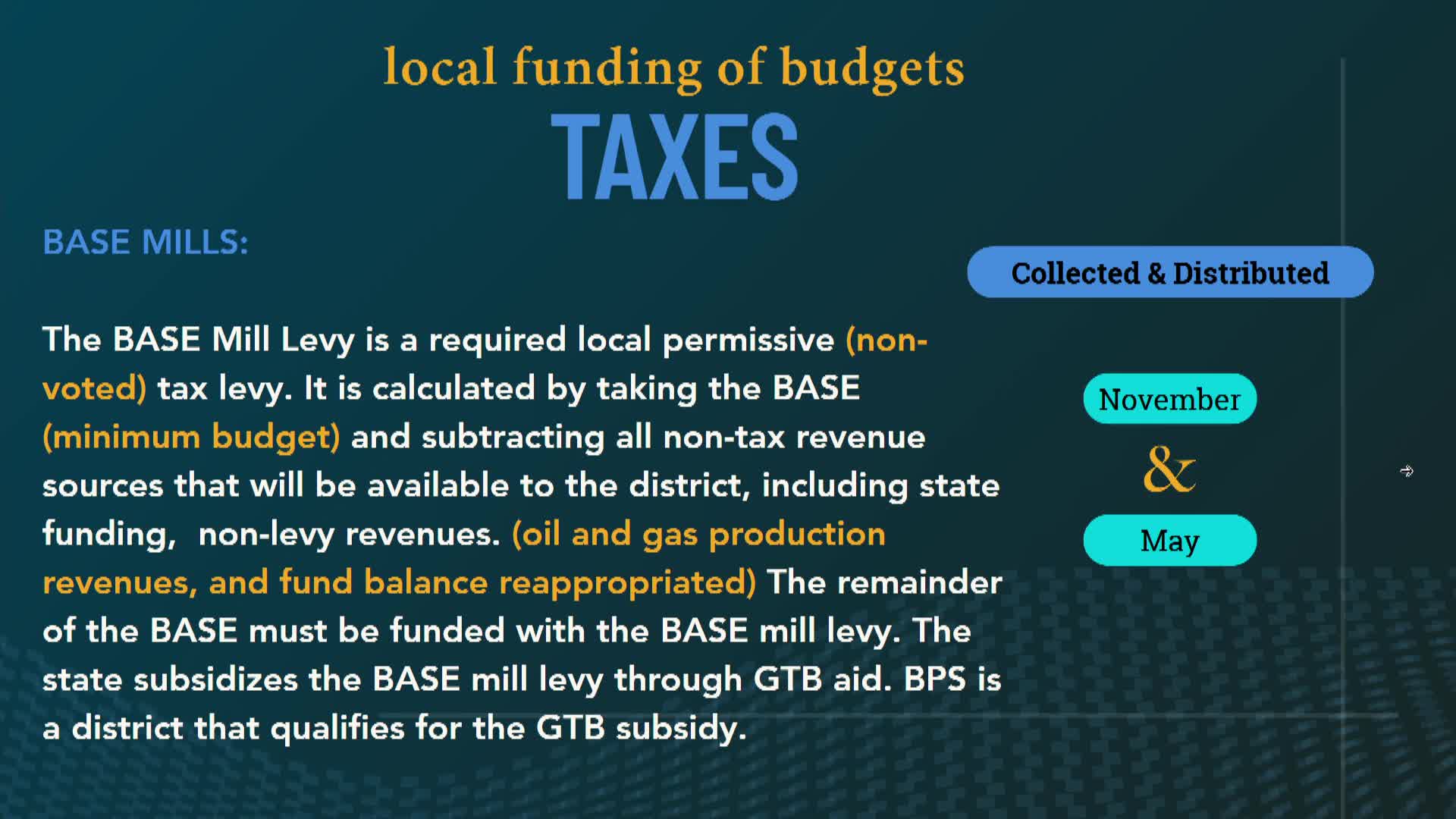Yellowstone County School District Faces Tax Collection Challenges and Levy Increases
August 25, 2025 | Billings, Yellowstone, Montana
This article was created by AI summarizing key points discussed. AI makes mistakes, so for full details and context, please refer to the video of the full meeting. Please report any errors so we can fix them. Report an error »

The Billings School District 2 (SD2) Special Board Meeting held on August 25, 2025, focused on the district's budget and the implications of recent changes in local tax laws. The meeting highlighted the challenges faced by the district due to a decline in taxable evaluations and the need to adjust mill levies to meet budgetary requirements.
A significant portion of the district's budget is funded through local taxes, which are affected by a new tiered residential tax rate recently enacted by the state legislature. This new structure taxes homes differently based on their value, with rates decreasing for properties valued up to $400,000 and increasing for higher valuations. The district's financial officer noted that this change has led to a sharp decline in tax collections, necessitating an increase in the number of mills assessed to maintain funding levels.
The board discussed the impact of unpaid taxes from significant properties, such as Rimrock Mall, which has contributed to the district's financial strain. The county treasurer is working on strategies to improve tax collection, including sending reminders to property owners.
Trustee Larson raised concerns about whether the increase in mills would also lead to a rise in dollar amounts collected. The financial officer confirmed that some dollar amounts would indeed increase, particularly in the tuition fund, which has seen rising costs due to special education and school choice programs.
The meeting also addressed the importance of maintaining reserve funds, which are crucial for the district's financial health. The board aims to keep reserves at a minimum of 5%, and current reserves are slightly below this threshold due to the recent tax collection issues. The financial officer emphasized that reserves are vital for meeting budget obligations and for future financial stability, especially when seeking bonds.
As the meeting concluded, the board reviewed various budgeted funds, with a focus on the general fund and its contributions from state and local sources. The discussions underscored the ongoing financial challenges facing Billings SD2 and the need for strategic planning to ensure the district's fiscal responsibility and educational funding.
A significant portion of the district's budget is funded through local taxes, which are affected by a new tiered residential tax rate recently enacted by the state legislature. This new structure taxes homes differently based on their value, with rates decreasing for properties valued up to $400,000 and increasing for higher valuations. The district's financial officer noted that this change has led to a sharp decline in tax collections, necessitating an increase in the number of mills assessed to maintain funding levels.
The board discussed the impact of unpaid taxes from significant properties, such as Rimrock Mall, which has contributed to the district's financial strain. The county treasurer is working on strategies to improve tax collection, including sending reminders to property owners.
Trustee Larson raised concerns about whether the increase in mills would also lead to a rise in dollar amounts collected. The financial officer confirmed that some dollar amounts would indeed increase, particularly in the tuition fund, which has seen rising costs due to special education and school choice programs.
The meeting also addressed the importance of maintaining reserve funds, which are crucial for the district's financial health. The board aims to keep reserves at a minimum of 5%, and current reserves are slightly below this threshold due to the recent tax collection issues. The financial officer emphasized that reserves are vital for meeting budget obligations and for future financial stability, especially when seeking bonds.
As the meeting concluded, the board reviewed various budgeted funds, with a focus on the general fund and its contributions from state and local sources. The discussions underscored the ongoing financial challenges facing Billings SD2 and the need for strategic planning to ensure the district's fiscal responsibility and educational funding.
View full meeting
This article is based on a recent meeting—watch the full video and explore the complete transcript for deeper insights into the discussion.
View full meeting
